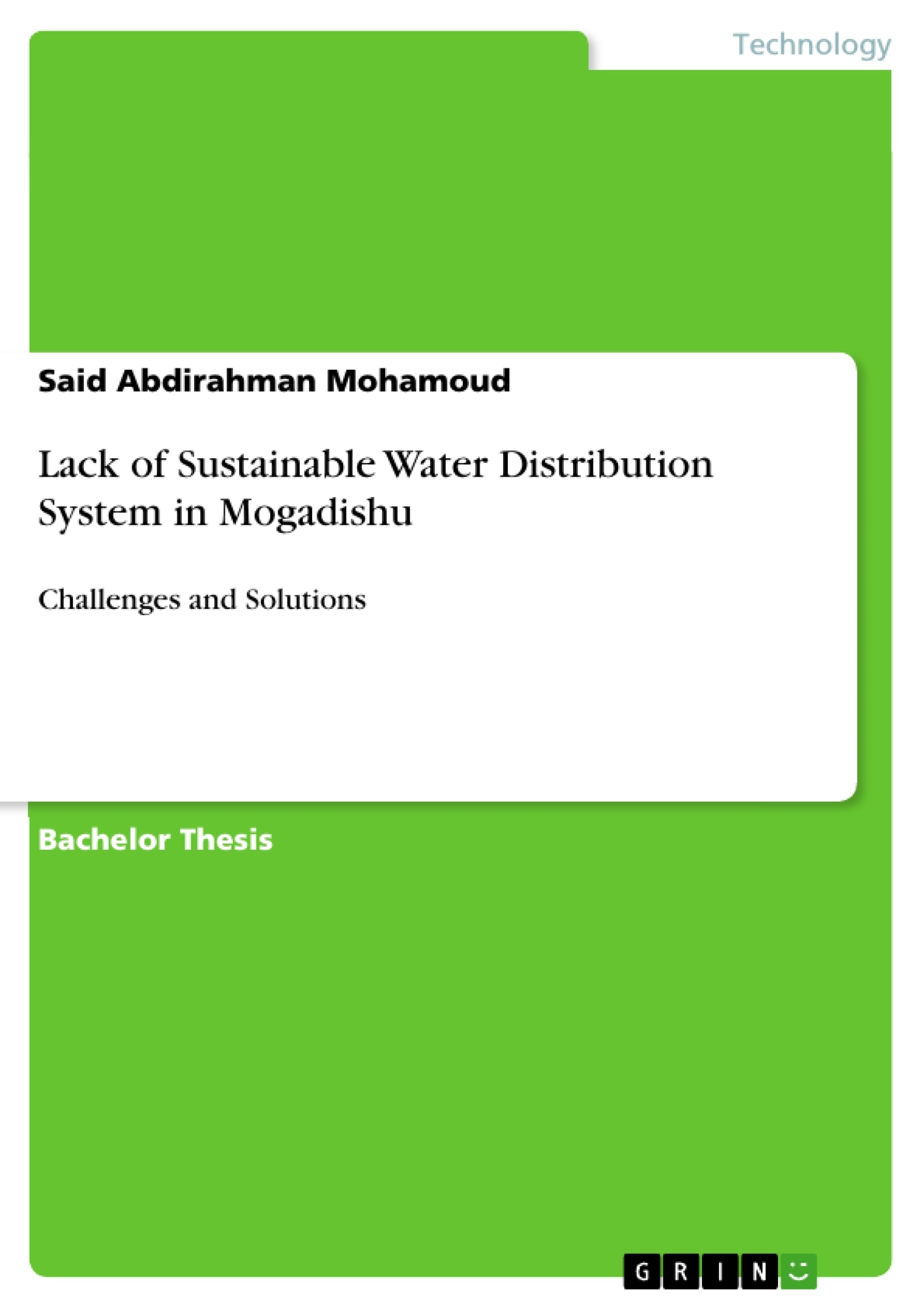Water is one of the essential natural resources. The water distribution system is a process that delivers water from its resource to the intended endpoint or user with quality and standard pressure. A sustainable water distribution system should provide an adequate quantity and appropriate quality water. To have sustainable water is a crucial issue in human life.
A water distribution system is a hydraulic infrastructure that consists of different elements like pipes, valves, pumps, tanks, and reservoirs. This infrastructure helps to convey water from the source to the end users. Furthermore, a water distribution system must be able to assist the abnormal conditions such as pipe breakage, mechanical failure of pipes, valves, and control systems, power outages, and inaccurate demand projections. (Bhatt, 2017)
A sustainable water distribution system network covers all the activities related to the provision of potable water. A sustainable water distribution system refers to as “providing an adequate and reliable water distribution of desired quality–now and for future generations–in a manner that integrates economic growth, environmental protection, and social development” (AWWA 2009)
Inhaltsverzeichnis (Table of Contents)
- CHAPTER ONE
- 1.0 INTRODUCTION
- 1.1 Background of the study
- 1.1.1 Theoretical Perspective
- 1.1.2 Historical perspective
- 1.2 statement of the problem
- 1.3 Research objectives:
- 1.3.1 General research objectives
- 1.3.2Specific research objectives
- 1.4Research Questions
- 1.5 Scope of the study
- 1.5.1 Content scope
- 1.5.2 Time scope
- 1.5.3 Geographical scope
- 1.6 Significance of the Study
- 1.7 Definition key terms
- CHAPTER TWO
- 2.0 LITERATURE REVIEW
- 2.1 Introduction
- 2.2 Types of water distribution networks
- 2.2.1 Radial system
- 2.2.2 Grid Iron System
- 2.2.3 Ring System
- 2.2.4 Dead End System
- 2.3 Causes of lack of water distribution system
- 2.3.1 The Exceeding of Water Demand over the Capacity to Supply
- 2.3.2 Low Piped-Water Coverage
- 2.3.3 Intermittency of Water Supply
- 2.4 Effective factors in causing leakage in urban water distribution network
- 2.4.1 Material of the pipes
- 2.4.2 The Pressure
- 2.4.3 The Depth of Placement of the Pipes
- 2.4.4 The age of the pipes
- 2.4.5 The movement of the soil around the pipe
- 2.4.6 Incorrect installation
- 2.5 The Effects of an Intermittent Piped Water Network and Storage Practices on Household Water Quality
- 2.5 Factors affecting intermittent water supply in distribution systems:
- 2.5.1 Population Growth
- 2.5.2 Decreased Revenue
- 2.5.3 Pipe Breaks/Leaks
- 2.5.4 Non-Revenue Water (NRW)
- CHAPTER THREE
- 3.0 METHODOLOGY
- 3.1 Introduction
- 3.2 Research Design
- 3.3 Scope of the Study
- 3.4Research Population
- 3.5Sample Size
- 3.6Sampling Technique
- 3.6.1 Data Analysis
- 3.7Ethical consideration
- 3.8Study Limitation
- The importance of a sustainable water distribution system
- Factors contributing to the lack of a sustainable water distribution system in Mogadishu
- The impact of the lack of a sustainable water distribution system on water supply and water quality
- Potential solutions to improve the water distribution system
- The role of government and other stakeholders in addressing water supply issues
Zielsetzung und Themenschwerpunkte (Objectives and Key Themes)
This capstone research project investigates the lack of a sustainable water distribution system in Mogadishu, Somalia. The study aims to identify the root causes of this problem and analyze its impact on the city's water supply.
Zusammenfassung der Kapitel (Chapter Summaries)
Chapter 1 presents an overview of the study, providing context and establishing the problem of a lack of sustainable water distribution system in Mogadishu. This chapter defines the scope of the study, outlines the research objectives, and formulates research questions. It also introduces the theoretical and historical perspectives on water distribution systems.
Chapter 2 focuses on the literature review, exploring existing research on water distribution networks. It examines different types of water distribution systems, analyzes the causes of their failure, and investigates factors contributing to leakage in urban water distribution networks. This chapter also delves into the effects of intermittent water supply on water quality and explores factors affecting intermittent water supply in distribution systems.
Chapter 3 details the research methodology employed in the study, outlining the research design, scope, population, sample size, sampling technique, and ethical considerations. It also addresses any limitations of the study.
Schlüsselwörter (Keywords)
Sustainable water distribution system, Mogadishu, Somalia, water supply, water quality, water demand, leakage, piped-water coverage, intermittency, population growth, non-revenue water, research methodology.
- Arbeit zitieren
- Said Abdirahman Mohamoud (Autor:in), 2019, Lack of Sustainable Water Distribution System in Mogadishu, München, GRIN Verlag, https://www.grin.com/document/506030



